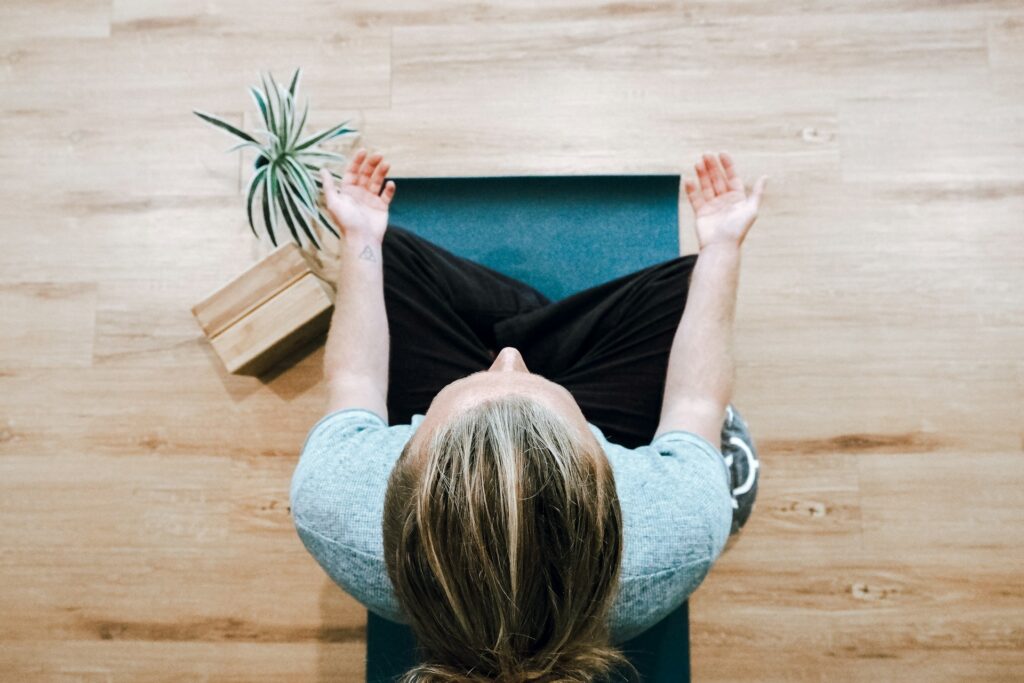The Power of Deep Breathing Exercises in Lowering Blood Pressure

High blood pressure, or hypertension, is one of the leading causes of heart disease worldwide. Many people rely on medications to manage their blood pressure, but these often come with side effects. What if there were a natural, drug-free way to help? Enter deep breathing exercises—a scientifically backed method to support cardiovascular health. In this article, we’ll explore how you can reverse chronic diseases like hypertension through lifestyle interventions like deep breathing, nutrition, and movement.
Why Is High Blood Pressure a Concern?
High blood pressure puts extra strain on your heart and blood vessels, increasing your risk of serious health issues such as:
- Heart attack
- Stroke
- Kidney disease
- Vision loss
According to the World Health Organization (WHO), nearly 1.3 billion people globally suffer from hypertension, with many unaware of their condition. Addressing high blood pressure naturally can reduce dependency on medications and their associated risks.
The Science Behind Deep Breathing and Blood Pressure
Deep breathing helps activate the parasympathetic nervous system, also known as the “rest-and-digest” system. This reduces stress hormones like cortisol and lowers your heart rate and blood pressure. Here’s how it works:
- Oxygen Balance: Deep breaths increase oxygen levels in your blood, improving circulation and reducing strain on the heart.
- Vagus Nerve Stimulation: Controlled breathing stimulates the vagus nerve, promoting relaxation and reducing blood pressure.
- Stress Reduction: By calming the mind, deep breathing helps counteract the harmful effects of chronic stress on cardiovascular health.
Studies confirm that regular deep breathing exercises can significantly lower systolic and diastolic blood pressure.
Top Breathing Techniques to Lower Blood Pressure
1. Diaphragmatic Breathing
Also known as belly breathing, this technique focuses on engaging your diaphragm for deeper breaths.
How to Practice:
- Sit comfortably with one hand on your chest and the other on your belly.
- Inhale deeply through your nose, ensuring your belly rises while your chest remains still.
- Exhale slowly through your mouth.
2. Box Breathing
A favorite among athletes and military personnel, box breathing helps regulate your heart rate.
How to Practice:
- Inhale for a count of four.
- Hold your breath for a count of four.
- Exhale for a count of four.
- Hold your breath again for a count of four.
3. Alternate Nostril Breathing (Nadi Shodhana)
This yogic breathing technique balances energy and reduces stress.
How to Practice:
- Close your right nostril with your thumb and inhale through your left nostril.
- Close your left nostril with your ring finger and exhale through your right nostril.
- Alternate for 5-10 minutes.
4. Resonant Breathing
Resonant, or coherent breathing, involves breathing at a rate of six breaths per minute.
How to Practice:
- Inhale for a count of five.
- Exhale for a count of five.
Complementary Strategies to Support Blood Pressure Control
Deep breathing works best when combined with other lifestyle changes. Here are some additional natural methods:
1. Nutrition
- Incorporate potassium-rich foods like bananas and spinach to balance sodium levels.
- Consume herbs like garlic, ginger, and turmeric, which improve blood circulation.
2. Physical Activity
Regular moderate exercise, such as walking or yoga, strengthens the heart and improves vascular function.
3. Stress Management
Practices like meditation and journaling can complement your deep breathing exercises.
4. Hydration
Staying hydrated helps maintain optimal blood viscosity, reducing the workload on your heart.
Step Up Your Breathing Practice With These Tips
To make the most of your deep breathing exercises, consider these practical tips:
1. Set a Routine
Consistency is crucial. Set aside 10-15 minutes daily for your breathing practice. Early morning or before bed can be great times to integrate this habit.
2. Create a Relaxing Environment
Choose a quiet space free from distractions. Dim the lights, play calming music, or diffuse essential oils like lavender or chamomile to enhance relaxation.
3. Combine With Mindfulness
Pair your breathing exercises with mindfulness or meditation. Focus on your breath, and let go of intrusive thoughts to maximize relaxation.
4. Incorporate Movement
Blend deep breathing with gentle movements like yoga or tai chi. This combination can amplify the benefits for your cardiovascular system and overall well-being.
5. Stay Patient and Persistent
Results take time. While you may feel immediate relaxation, consistent practice over weeks or months is necessary to see measurable reductions in blood pressure.
Conclusion
Deep breathing is a simple yet powerful tool to lower blood pressure and enhance overall health. Unlike pharmaceuticals, which often come with side effects, this natural intervention carries minimal risk and profound benefits. The Lx app is your partner in this journey, offering lifestyle interventions that prioritize prevention and natural healing over toxic medication.
Take the first step toward better health today. Try the Lx app and discover how lifestyle interventions can transform your life.
Common Myths and FAQs About Breathing and Blood Pressure
1. Can deep breathing lower blood pressure?
Yes, deep breathing activates the parasympathetic nervous system, which helps reduce blood pressure.
2. Does holding your breath lower your blood pressure?
Holding your breath temporarily affects heart rate but isn’t a sustainable method for lowering blood pressure.
3. How quickly can deep breathing lower blood pressure?
While immediate effects can occur, consistent practice over weeks yields significant results.
4. Does breathing affect blood pressure?
Absolutely. Breathing techniques influence oxygen levels, heart rate, and stress hormones, all of which affect blood pressure.

